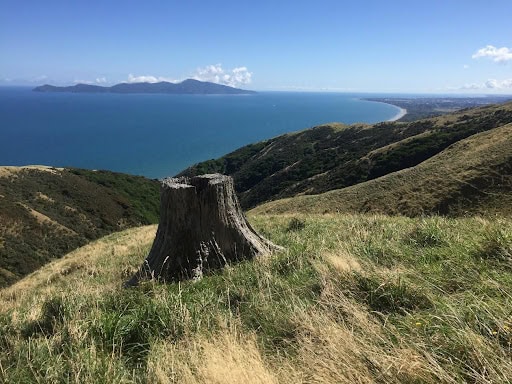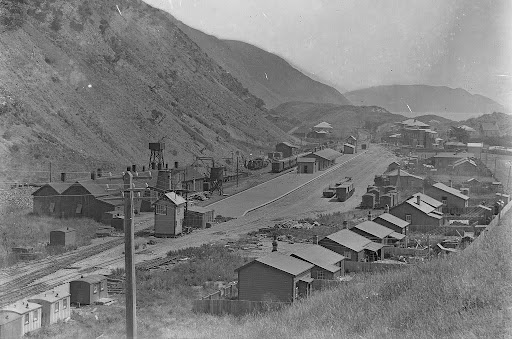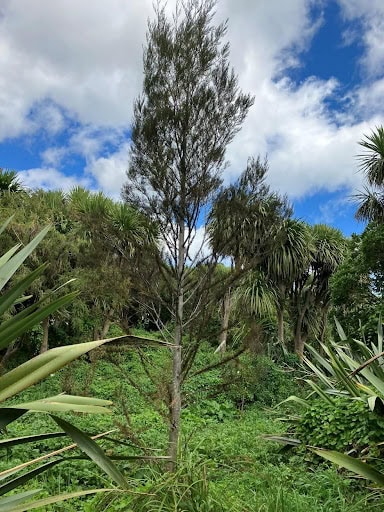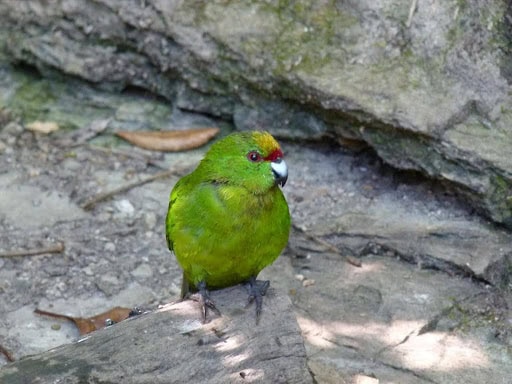From bare hills to regenerating bush, the spaces around Paekākāriki are gradually becoming rewilded, restoring the native fauna and flora. Paul Callister tells us more.

A decade or so ago, people living in or visiting Paekākāriki would have had to walk a long way before spotting a kahikatea, miro, matai, milk tree, tōtara, hīnau, northern rata, pukatea or swamp maire growing in the wild places surrounding the village. Specimens of some of these trees could be found in local gardens. But they had pretty much disappeared from the wider landscape. Now, areas around the village are being ‘rewilded’, bringing back the missing large forest trees.
Once, Paekākāriki was the southern end of the ‘Great Swamp’. On the lowland, the large forest trees associated with wetlands were kahikatea, swamp maire and pukatea. These would have been very common. Only small remnants can still be seen at places like Ngā Manu, while there is an area of older kahikatea in Queen Elizabeth Park in the suitably named ‘remnant’. Although large kahikatea can be found in this remnant, they are not part of the old forest, but instead are ‘young’ 100-year-old trees: seedlings from the original swamp forest.
On the hills above the village, there would have been rimu, tōtara matai, miro, northern rata, hīnau, northern rata and a wide range of other large trees, within a kohekohe and tawa dominant forest. Small remnants of these can still be found, such as the eco-site on the Escarpment track and on the hills above Waikanae.
Post European colonisation, these trees would have been used for timber to build houses, for firewood, to make fence posts or simply burnt to make way for farmland, housing, and to build the railway. Old photos of the land around Paekākāriki show mainly bare hills.

Not only are some of these trees now rare regionally, but some are also nationally threatened. The Plant Conservation Network of New Zealand classifies both northern rata and swamp maire as ‘threatened – nationally critical’ and milk trees as ‘at risk’.

But rewilding, through the actions of both Greater Wellington Regional Council and volunteers, has been taking place across the whole of Queen Elizabeth Park, including sand dunes and wetlands on the boundary of Paekākāriki.
Whareroa farm reserve is also being rewilded by volunteers, supported by the Department of Conservation.
Local group Ngā Uruora has been re-cladding the Escarpment since 1997 and, with the assistance of the local branch of Forest & Bird, has been rewilding the Waikākāriki wetland. Ngā Uruora also undertakes pest control on the former Perkins’ farm, thus helping the small areas of remaining native forest bounce back though natural revegetation.
Early restoration work in Queen Elizabeth Park and on the Escarpment focused on bringing back the pioneer species. This helps to rapidly re-clad former farmland and is valuable in bringing back native birds. Trees used for this include mānuka, kānuka, ngāio and māhoe. While they do not represent the original forest trees, they help suppress the weeds and provide the conditions where larger trees can thrive. Currently, more attention is being given to bringing back these larger forest trees.
This is a long process and many years of planting and looking after these trees to keep them weed free will be needed. If anyone would like to assist in this work locally, please contact Peter Kentish from Ngā Uruora via [email protected]
It might be a long time before kākāriki return to our village. But when they arrive, hopefully the forests they once thrived in will be there.

Paekākāriki.nz is a community-built, funded and run website. All funds go to weekly running costs, with huge amounts of professional work donated behind the scenes. If you can help financially, at a time when many supporting local businesses are hurting, we have launched a donation gateway.


